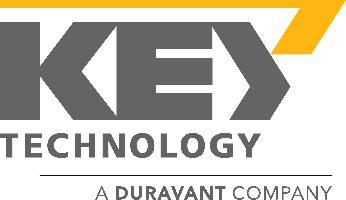The Duravant family of operating companies serve the food processing, packaging and material handling segments.
Robotic Palletizers vs. Conventional Systems
09/09/2021
In the field of packaging automation equipment, one of the fastest-growing segments is palletizing – driven by continually rising labor costs and talent attrition.
Those factors – which are impacting processes around the globe – are now driving many companies which had previously avoided fully integrated systems toward more automated palletizing solutions.
Under its Arpac and Hamer product brands, nVenia supplies both conventional and robotic palletizing equipment for a variety of product applications.
There are multiple differences between robotic palletizing systems and conventional palletizing equipment which may impact the ideal solution for each application. Here’s a quick summary.
Cost – While robotics have historically been seen as expensive in some fields, that’s actually not the case. The cost of robotic palletizing solutions continues to come down, while their performance and usability have continued to improve. At the same time, due to rising labor and healthcare costs across the packaging equipment industry, the costs associated with building and maintaining a conventional palletizer have gone up. We generally estimate that it takes about 3x the machine shop hours to create a conventional palletizing system, as compared to a robotic palletizing solution.
Speeds – Conventional palletizers are generally faster than robotic palletizing systems. Generally, basic robot designs are effective at speeds up to 30 products per minute, and complex robot designs can reach or exceed 40/min. However, using standard designs, a conventional palletizer can achieve 50-60/min. These higher speed applications are where they are best applied.
Floor Space and Clearances Required – Because it picks and places the products, a robotic palletizer is generally seen as a more compact solution. High-speed conventional palletizing systems often require a buffer table for layer sheets or pallet changes, as well as a high-level infeed (9 feet above floor level), and usually need a 20-foot inclined infeed conveyor or a spiral elevator.
Ongoing Maintenance Requirements – While every process is different, the preventative maintenance on a robot is generally a fraction of what is required with a conventional machine, which require regular chain tightening and photo eye adjustments.
Troubleshooting/Programming - Troubleshooting with each system is very different. For a conventional system, maintenance personnel are looking at traditional PLC programming which they are accustomed to. However, programming with robotic platforms uses structure text coding, which is used slightly differently by each robot OEM. This means that if a company is not already using robotics, additional training may be required. As robots continue to be implemented more and more, that barrier will continue to be diminished.
Flexibility – Robotic palletizing systems are generally more flexible when it comes to pallet height changes, product changes, and the addition of sheets. That is often not the case for conventional machines, unless those potential changes were included within the original system design when the machine was built.
In a high-cost, labor-scarce environment, the benefits of automated palletizing equipment – whether via a conventional system or a robotic palletizer – are clear. The systems improve quality, reduce rework, and eliminate lost time due to injuries and other labor-related issues.
Additional Resources









